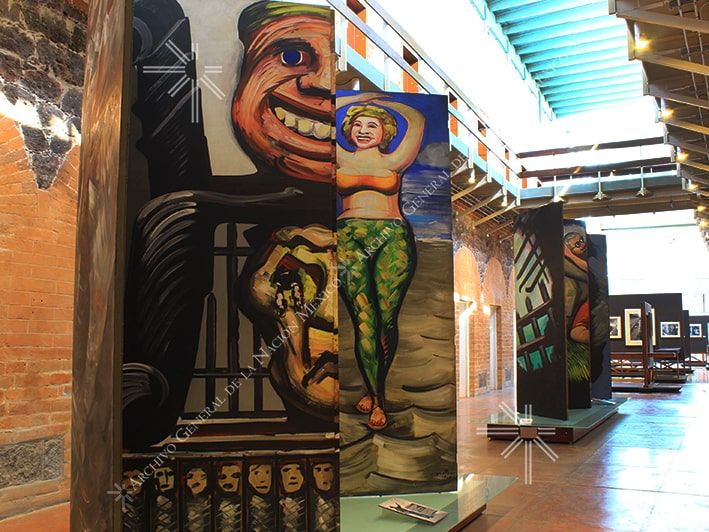Screens made by David Alfaro Siqueiros during his stay at the Lecumberri Penitentiary
During the prison period, Siqueiros' artistic creation never ceased, for it was there where he painted two screens that served as the scenery for a staging carried out inside the prison. These screens were separated for a long time until today when they are part of the cultural heritage.





